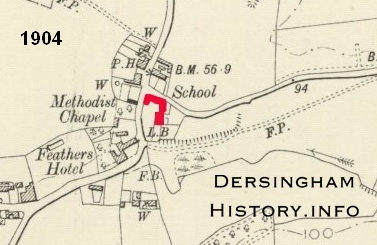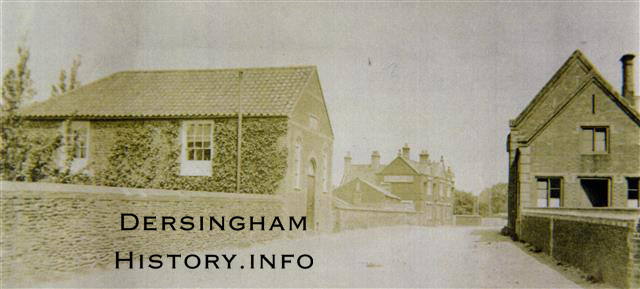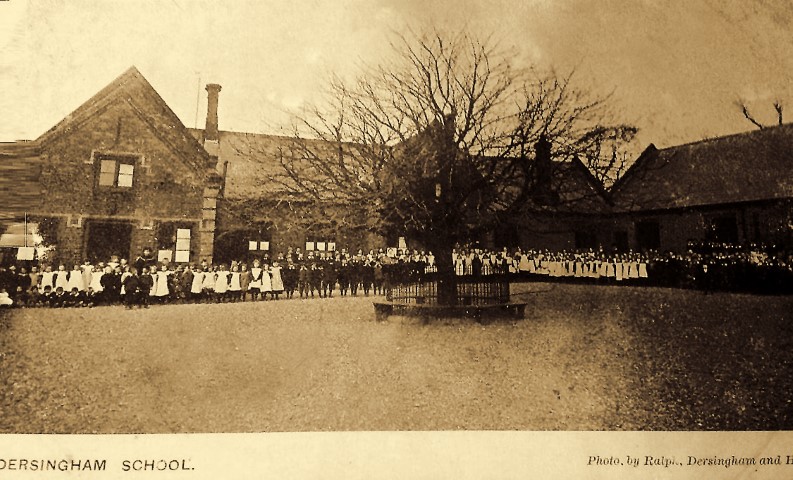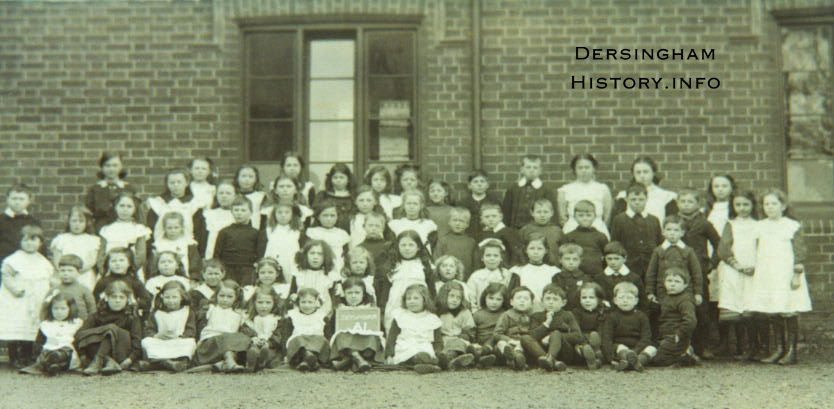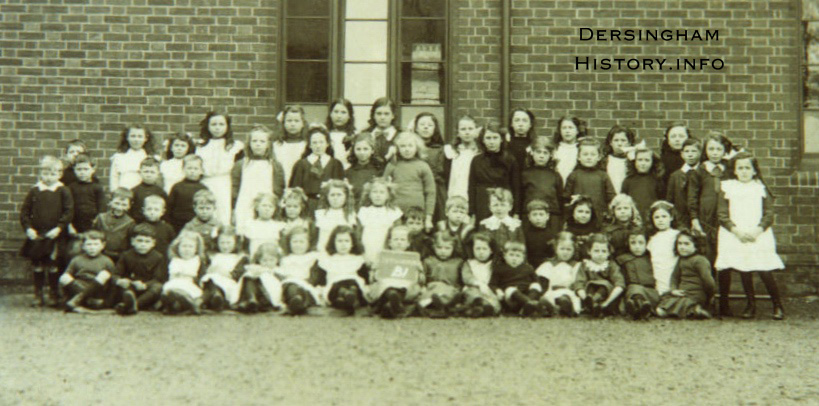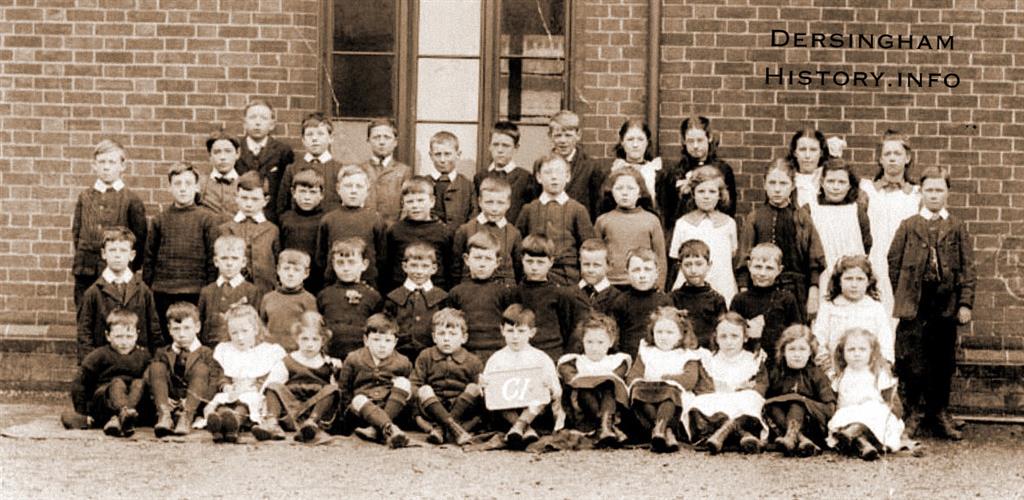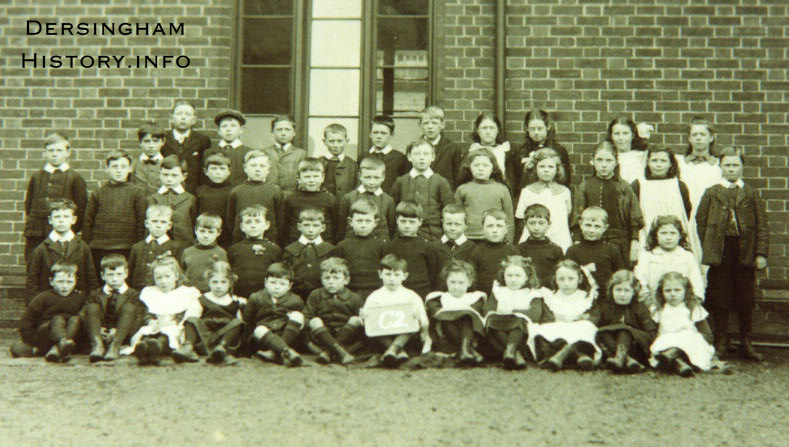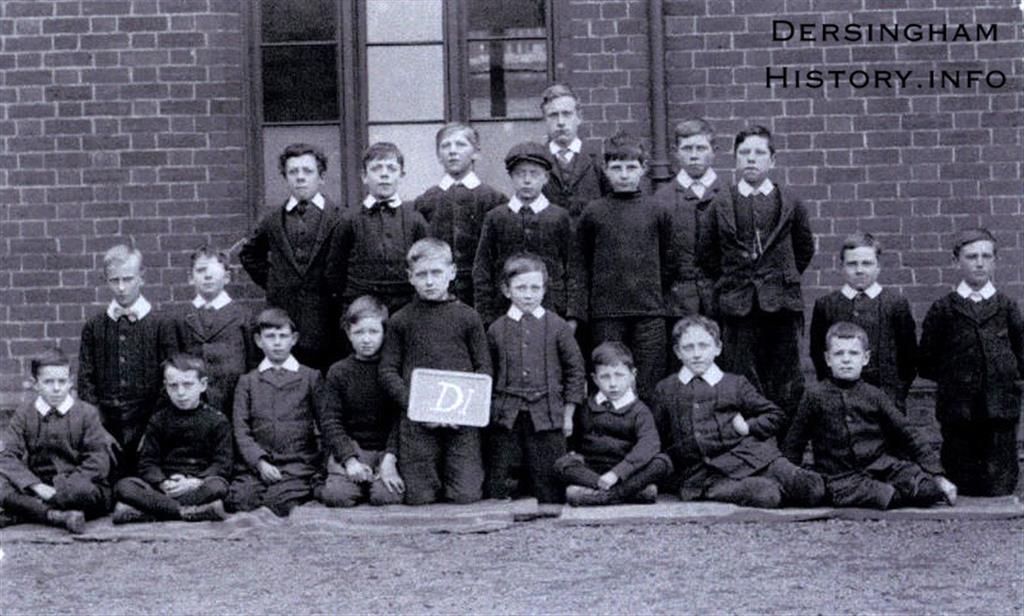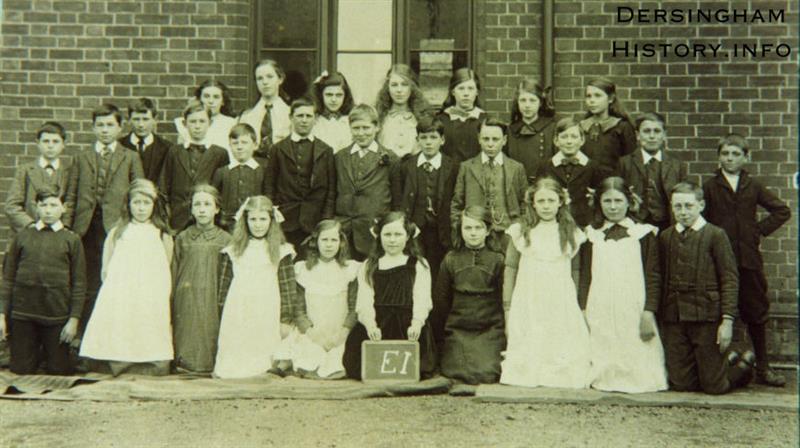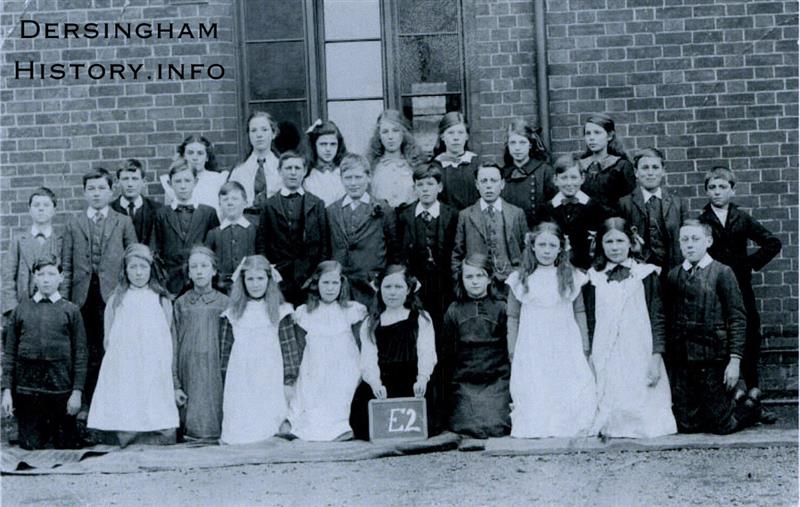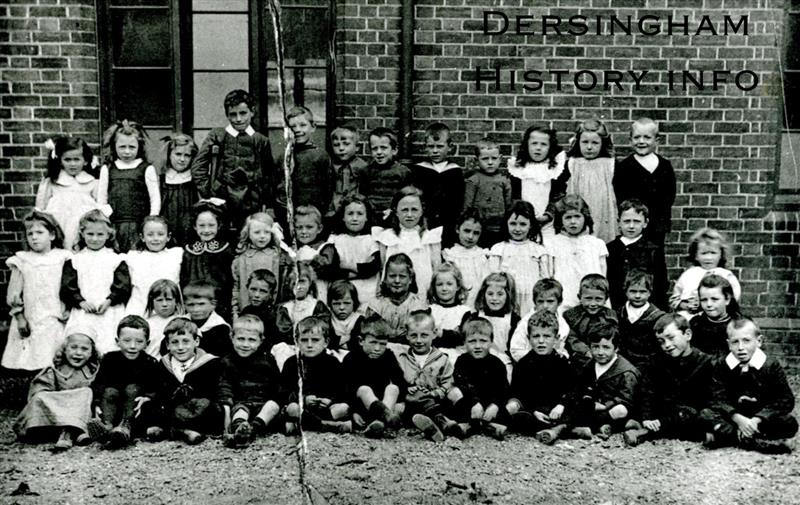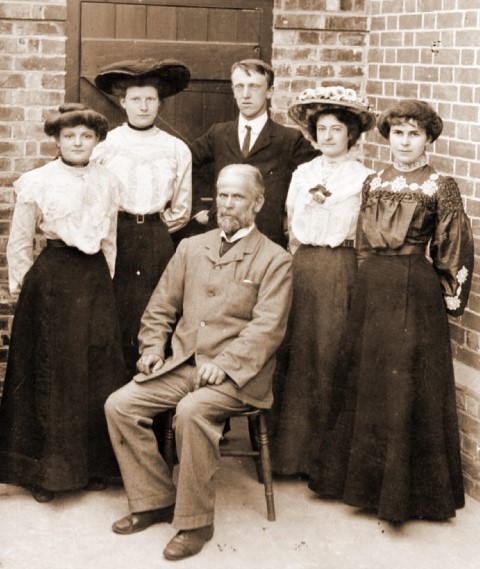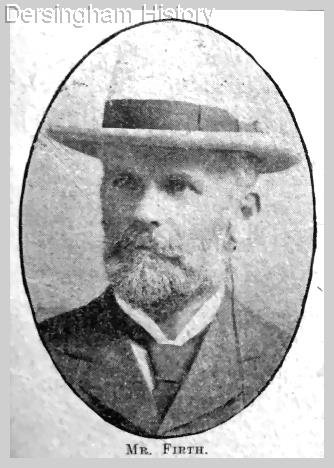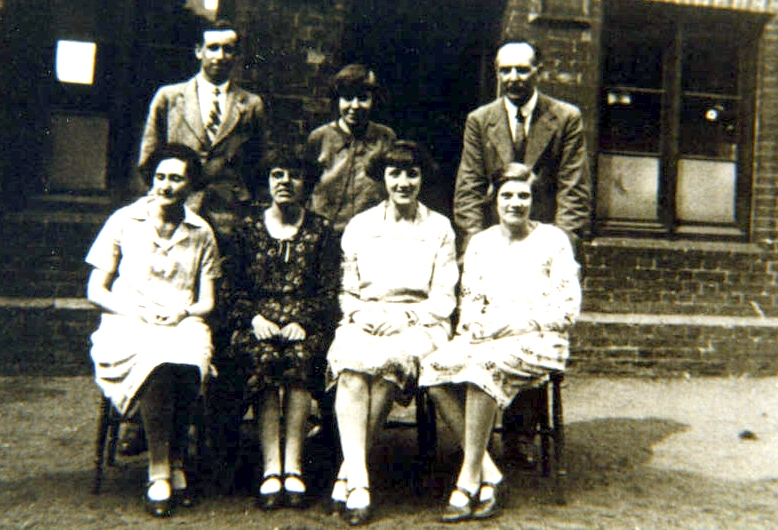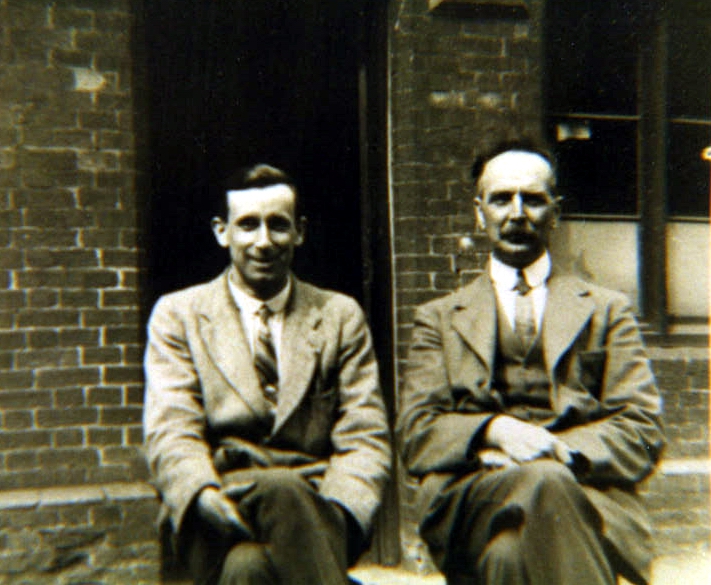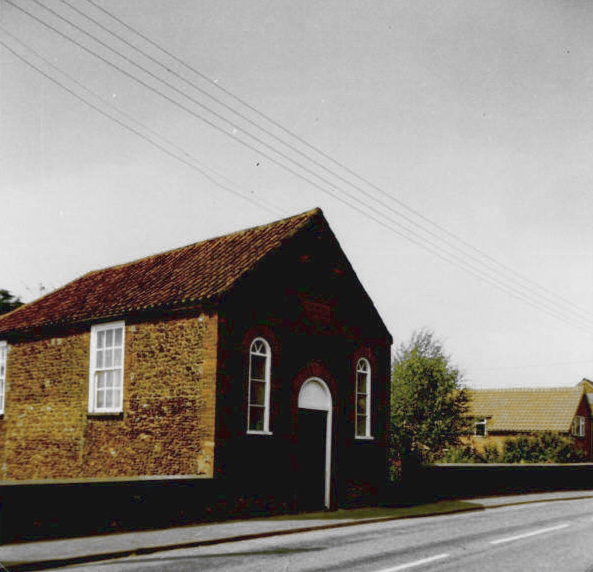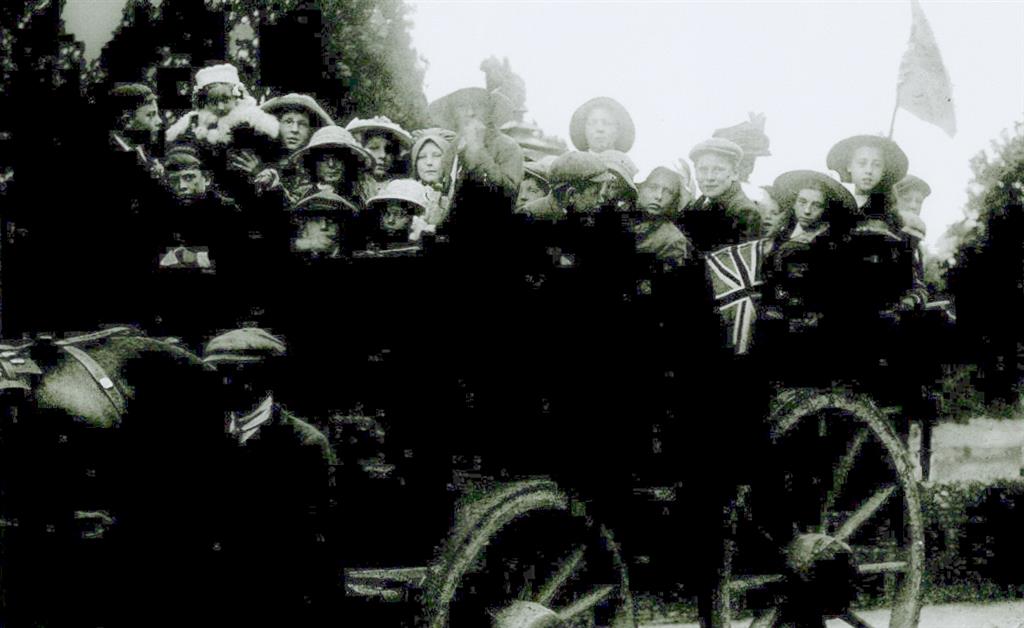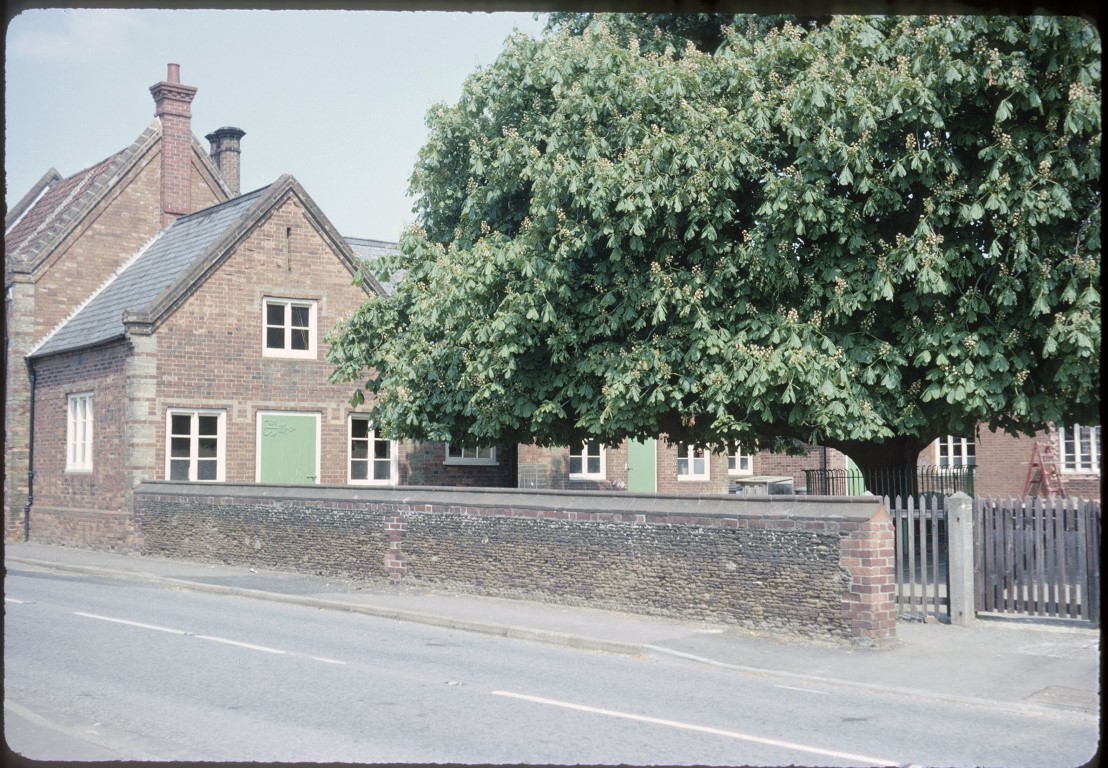In 1875 the Prince of Wales leased the site at the bottom of Doddshill, next to Pakenham Manor House (seen to the right in the photo above), to the village at a peppercorn rent to build a school; he also donated £500 towards the costs. At this time the vicarage was in the gift of the Rev. Dr. Bellamy, President of St John’s College Oxford who defrayed other costs in the building of the school. There are several examples of the arrangements for education in the village prior to the 19th century. A Henry Beckham was ordained priest in 1608 and in 1634 was licensed to “ teach grammar in the diocese”. On September 20th 1614 Robert Legatt of Snetsham, “was licensed as a schoolmaster for Dersingham by Robert Read”. In 1714 Sir Robert Walpole gave £5 “to teach 8 poor children to read English and such of them as are girls to work plain work.” The Commercial Directory of 1830 under the Academies and Schools entry for Lynn Regis lists the Rev. Brett and Miss Lubeck as running the school in Dersingham. The census of 1851 records Ann Mann, wife of John Mann, agricultural labourer as schoolmistress and William Green as Schoolmaster. William came from Hull and lodged in the village with the family of Robert Green. In that census 41 children are recorded as scholars and 8 as scholars at home. Five of the last group were the children of Richard Stanton of Ling House who employed Charlotte Gosker a cousin of the family as a governess. The 11 children of the families occupying the cottages at Ling House (Nurse, Nobes and Jarett,) are all listed as Scholars at Bircham. This even included two-year-old Hannah Jarett, her three-year-old sister Sarah, one-year-old James Nurse and his four-year-old brother William. A few children under the age of twelve are recorded as agricultural labourers and one is listed as errand boy. A large number however are neither recorded as scholars nor as having employment. In 1864 Emily Vince is the schoolmistress and according to the Directory 45 children attended the Parish School.
The Parish Magazine records many interesting facts concerning the opening of the new school. The largest room when built in 1875 was fitted with desks to seat sixty children but on the opening day 66 children were enrolled. The average attendance for the first year reached 88. The Directory of 1883 records Alfred Firth as schoolmaster. He and his wife Susannah were both born in Kenninghall in 1851 and 1848 respectively. Alfred’s sister Emma, born in 1853, joined Alfred in Dersingham as the Infants’ Mistress. There were two sons recorded in the 1881 census. Alfred R. born in Castle Rising in 1876 and Fred.G. born here in Dersingham in 1880. It seems likely that Alfred, sen. was the first schoolmaster for the newly built school.
Between 1883 and 1891 three more rooms were added to the original building. The cost of the extension in 1891 was £240 and was chiefly met by the Prince of Wales, and the Rev. Bellamy. The Rev. E.W. Penney gave desks and other school furniture. By this time the school could hold 250 children with an average attendance of 180. Regular inspections were carried out. In 1899 the children were examined in Religious Knowledge by a Rev. Groom who reported that the children ”passed a good examination and the teaching staff take great pains with their instructions”. H. R. Mines Esq. H. M. Inspector reported, ” The scholars are orderly and attentive, and are being well taught”. It was also noted with some pride that for this inspection, ”201 children presented themselves the highest number yet reached on these occasions”.
When Mr. Mines inspected the school in June 1902 his remarks chiefly referred to the overcrowded state of the two larger rooms. He noted that the largest room had been built to accommodate 60 but continued, “ of late years we have struggled to seat comfortably a hundred upwards in this room. The latest added room…built to accommodate 57, but there are now upwards of 70 children on the registers of the classes occupying that room. It follows from this that the largest room now used by three classes will only accommodate two; the second largest will only hold one instead of two…the new rooms provided ought to be large enough for two classes of about 36 children”.
He emphasised the need for additional accommodation for the older pupils but, ”where that can be made without an enlargement of the present site is a most puzzling problem”. The school was enlarged in 1904 so that it could hold 326 children with an average attendance of 220. By that time Miss Mabel Tomlin looked after the infants with Mr Firth still as the Schoolmaster. He remained in that position until 1916 when Elton E. O. Wheeler succeeded him.
There were many excellent reports of the work in the school. It was noted that some pupils gained certificates from the Education Department qualifying them as head teachers. However, ”others preferred the matrimonial certificate, confident, no doubt, of this qualifying them effectually to act as head mistress, although in that smaller school, - the home”. In his report of 1899 the Chief Inspector “urged upon the elder children the importance of regularity in attendance; not to let trifling reasons keep them from school, and pointed out how good teachers and good buildings and appliances are all wasted upon absent children.”
However, not everyone was convinced of the value of this modern system. In October 1899 the Parish Magazine reported that at a competition held at East Winch,” several of our men took prizes, Melton, Crowe, Harrod and Riches being very successful in the ploughing competition”. The writer went on to suggest that the Education Department should regulate the School training to the needs of the locality, “One does not need recurring decimals in agricultural districts…Education should help towards a man’s life work instead of being, as it very often is, a period of unfitting lads for useful work and rendering them unfit to do good work for their country”. Although professing to value real education beyond measure the writer ended with the plea to” decentralise and not waste time in training our future labourers by urban methods.”
In January 1900 it was reported that two children were awarded Norfolk County Council Scholarships. “Ernest Tupper and Jessie Smith are to be congratulated as they have been two of the most regular children in attendance during the year; while Tupper has long been looked upon as the best-behaved as well as the most persevering boy in the school”. These scholarships are mentioned again in 1902 when Alice Ainsley and Walter Smith, both aged 12 were successful. We learn that, ”These are worth about £20 per annum for three years.” Alice had only been absent from school once on 307 meetings and Walter nearly as regular. The Chief Inspector would have been delighted for there are many references to irregularity in attendance and that excuses for not attending were prolific. The Parish Magazine printed this anecdote: "A couple of boys tramped two miles in a half blizzard to school, and the youngest was quizzed on coming by another lad. His reply was, “What’s the good of stopping at home? You cannot get out, and you have to mind the baby all day, and maybe you’ll have three or four hidings before bedtime, and go to bed a-roaring! It’s better to be here.”
Compulsory education was difficult to enforce during the late 19th and early 20th century. There were not enough Attendance Officers and they were not highly regarded. Even if an officer did report a parent to a magistrate he often found that the magistrate was one of the farmer J.P.’s who provided employment for the children. The school logbook records some of the reasons for absenteeism. Boys would be away potato picking, helping with corn drilling or recorded as absent in the hay fields. In 1899 the school closed down on August 4th harvest operations having become general. Poor attendance was also recorded during the Sandringham shooting season with large numbers of boys being engaged by trippers at the Sandringham grounds, or being employed shot carrying. There were other reasons as well. One entry records, Lynn Mart. Cheap trains. Poor attendance. Another states Yarmouth races. 28 absent chiefly in the 1st class. A whole day’s holiday was awarded for the Sandringham Flower Show.
Discipline was enforced rigorously with the cane and recorded in the Punishment book. Repeated inattention was punished with 2 strokes, rowdyism on the road, 4 strokes and for being an inattentive dunce one poor child received 3 strokes. Another child was punished for repeatedly practising loafing and a tramp’s manner. Other misdemeanours included, using hymnbooks as weapons and chasing horses in Pasture Field. One pupil was punished for, hitting his sister (elder) after repeated warnings not to do so. While another, "Took boy’s pump from cycle on way home. Hit boy on head with pump."
Although constantly exhorted to work hard there were numerous treats laid on for the children. In February 1899 it was reported that the school treat had been revived and a Mr. Ernest Bryant undertook the organisation. The subscription list was headed by a handsome donation from The Prince and Princess of Wales; “On Thursday January 12th the Forester’s Hall was filled with a crowd of happy children.” Most of the principle inhabitants of the village assisted in waiting, “At a capital tea, Mr. Jannoch kindly lending the table decoration. Afterwards a Punch and Judy show was provided followed by prizes from the Christmas tree and bran tubs”. (Theodore Jannoch was a German national who settled here and is recorded in the Directories from 1883 as “nursery man and lily of the valley grower to H.R.H. the Prince of Wales.” More about him will follow in another article).
A Royal birthday was another occasion the children would have enjoyed. In December 1899, “The children were as usual most kindly thought of by H.R.H. the Princess of Wales and had a bountiful tea served in school, the three rooms being well filled with happy children. There was an abundance of good things for those present, as well as sufficient for a nice parcel to be sent to the sick children and some of the old people in the village”.
In June 1902 it was noted that, “ Gunner Sidney Rainbow, invalided home from South Africa, has kindly helped in giving some time, nearly every day, to teaching military drill in the playground, and the school children have apparently enjoyed this professional coaching.” It is salutary to think that in just 12 years some of these same children would be involved in a Military Drill of quite a different order.
There are also frequent mentions in the Parish Magazine of a Night School. In November 1899 an obituary notice for Mr. Enoch Beckett who had been the Postmaster recorded that ”He also helped in the early years of the Night School.” In February 1900 an entry reads, “The Night School, which has been held three evenings a week since October, was visited by H.M. Inspector Mr. G. Johnson. The young men and boys are making fair progress. Each meeting lasts for nearly two hours….” In December 1900 the villagers were informed that the Evening School, was“open three evenings a week for instruction in Agriculture, Mensuration and Drawing.” It was noted that 23 lads had attended the courses.
The rather serene picture below shows the school on the right in context with the Coach and Horses pub in the distance and the Methodist New Connexion Chapel on the left; it dates from about 1910.


